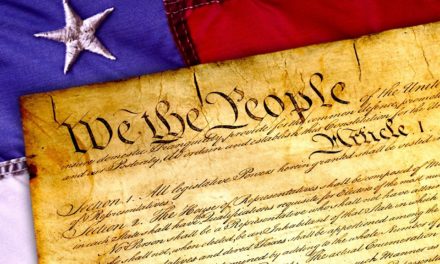San Antonio’s large Mexican American community, for many years, largely concentrated in the southern and western portion of the city, owes much of its stability to the presence of Kelly Air Force Base in the western edge of the city. In the postwar decades, Kelly Field, as it was known, was for many decades the largest industrial employer in San Antonio, with over 25,000 employees at its peak. Scholars estimate that Mexican Americans represented sixty percent of that workforce. Jobs at Kelly, over its eighty-five year existence, made it possible for thousands of Mexican Americans families to move into the middle class. Edward Riojas, a long time employee at the base, told Texas Public Radio in 2011 that Kelly Field offered many opportunities for advancement. He commented: “People like myself who came in with no skills, we got an equal shot at promotions, and we got our promotions. And then our kids would go to school, and they would become lawyers and doctors and Indians chiefs and everything else.” To live in the Westside was to know someone who worked or had worked at Kelly Field. Adam Barrientes, worked at Kelly for forty-two years. His work in the maintenance organization of Kelly enabled him to buy his first home at Brady Gardens near 19th Street, in the heart of the Westside. Now 95 years of age, he has fond memories of all the friendships he made while at Kelly. His daughter, Olga Perez, a classmate of mine at Fox Tech High School, went to work at Kelly Field six months after graduating from high school. She entered as a clerk typists in 1965 and retired forty years later. Her last assignment was Program Manager for the Air Force Ejection Seats at Brooks AFB. Her husband, Daniel Perez, a Kelly worker in transport and supplies, worked at the base until he was called up for active duty in Desert Storm. Like many Kelly workers, Perez had enlisted in the Air Force Reserves. Sadly, he never returned, losing his life in a plane crash. Many San Antonians know the importance of Kelly Field to the economy of the city, but few fully understand its evolution as a major employer in the Westside community. Here we will offer a brief account of how it all began. The idea that aircraft could be of value in warfare was tested in 1916 when General “Blackjack” Pershing employed several planes to help him in the hunt for Mexican rebel leader Pancho Villa. The planes crashed and Pershing never found Villa, but the experiment showed great promise. When the United States entered World War I in April of 1917, Kelly Field was one of thirty-two Air Service training camps created. The base began when military leaders viewed a cotton field west of the city as the ideal place for training pilots to fly. Its isolation and flat terrain made the location perfect for take offs and landings. The ample space also allowed building aircraft hangers and fuel depots. All large urban communities in the United States had experienced economic disruptions associated with the Great Depression in the 1930s. Few had poorer neighborhoods than San Antonio. Latinos living in the south and Westside were especially impacted by the lack of jobs and reliance on low paying unskilled work. But with the entry of the United States into World War II in December of 1941, Kelly Field changed the workforce opportunities for the better. In the process Kelly Field opened up new opportunities for Westsiders to buy homes and send their children to college. Albert Curtis, author of Fabulous San Antonio, wrote of the World War II days when the base “reached a spectacular peak” and stationed 6,000 officers and enlisted men and employed 24,000 civilians, which included 10,000 women. Eileen Pace, of Texas Public Radio, commented that “over the years, civil service workers in the hangers at Kelly Air Force Base fine-tuned fighter aircraft and giant cargo planes that transported people, tanks, equipment, medical teams, wounded soldiers and supplies for humanitarian missions.” The base had one of the longest landing fields in America and occupied more than five square miles. Getting in and out of the base in peak times during the morning and afternoon rush hours was no easy task. On numerous occasions Base leadership had to plead with city leaders to expand the roadways leading to and out of the base. Fred Herrera, former Deputy Chief of the Industrial Systems Engineering Division, turns 90 this year and started working at Kelly Field at age nineteen. Kelly Field always relied on the merit system and all aspirant applicants were given a test. In 1948, Herrera scored in the top ten percent of the 1100 who were tested that year. Herrera, a graduate of Edgewood High School, had been encouraged to apply by one of his classmates, a sheet metal worker at the base. They both credited their preparation at their high school for helping them to score well in the exam. Herrera noted that with four years of math and English, they were far better prepared than most of the test takers. 1948 was an important year for young Herrera. He got married, started his career with Kelly Field, and built his own house with the help of his dad. He and his wife lived in the same house in the Westside for the 40 years that Herrera worked at Kelly Field. Their house, near the Las Palmas shopping Center and in the Edgewood District, was home to five of their children. Herrera recalled that at the height of Vietnam War in 1970, Kelly Field employed 18,000 workers, the majority of them from the Latino communities south and west of the base. When Kelly Field closed in 2001, it was the oldest permanent air base in the United States. More importantly to the Westside, it was its largest employer. For eighty-five years Kelly Air Force Base played an significant role in the America’s military defense. Often not mentioned is it role in the creation of a middle class Mexican American community in San Antonio.
Kelly Field: How it transformed the Westside











